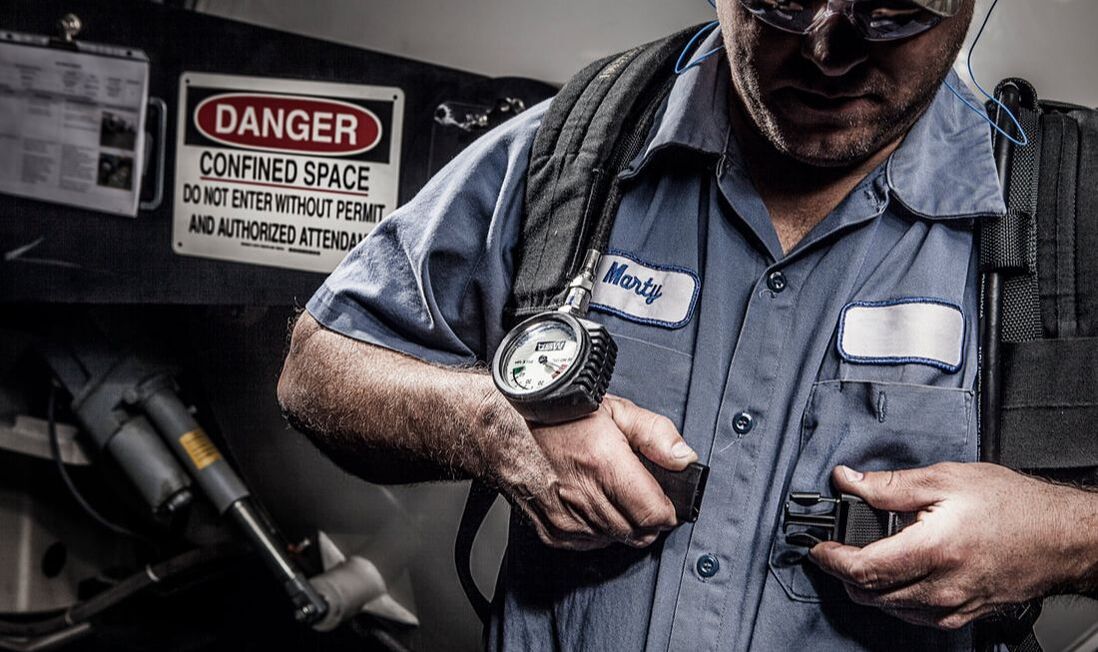Why qualitative testings no longer fit
Quantitative is taking over for good reason
July 17, 2023
By Blue Print Editorial Team
By Blue Print Editorial Team
|
As a safety professional, I have completed hundreds of qualitative fit testings during my years in the industry. I have visited many customers and worked with many of their employees within a respiratory program. It goes without saying, the importance of ensuring a mask fits well and provides the necessary protection is essential to the basic drive we all share and that is, simply stated, to keep our employees safe each day.
The bonus to this test method was the reaction of the employee as we began the tests. It was always a little fun to see the faces of those that tasted the Bitrex as it hit their tongue during the pre-test test. I also, learned that you don’t want to be chewing bubble gum while testing an employee. ICK! I have always enjoyed working closely with my customers and their teams. The qualitative fit testing method had always been preferred due to its speed, and I would brag about the number of people I could test at a single time. But as we know now, these tests are very subjective and can be influenced by things like an employee smoking minutes before the test or if they had coffee just before walking into the room. Certainly, there are limitations to qualitative fit testing. If you get a moment, read through the Safety+Health article, “The limitations of qualitative respirator fit testing,” dated Jan. 1, 2001, authored by Jeff Weed. Within the article he notes the following.
This isn’t new news. We have always been aware of the limitations, but I would suggest that in a post-COVID world our sensitivities of taste and smell makes the threshold test more difficult to pass. COVID is here to stay in one variant or another. This fall, we will prepare our employees for flu and COVID season. We know a healthy workforce is a happy and productive workforce. It’s clear that COVID has affected workers. At www.healthline.com there is an article that notes “90% of people who lose sense of smell or taste from COVID-19 regain it within 2 years.” The story reminds us that “nearly 27 million people worldwide have experienced COVID-related smell or taste loss.” This is a huge chunk of the population, and it begs me to ask the question: Am I testing a person who has regained their senses, and if so, to what percent? How were they (if at all) affected by COVID? Yahoo News had an article written by the Miami Herald titled, “COVID left millions without the full sense of taste, smell, study says. Can anything help?” From that piece:
All this brings me back to my initial thesis: Qualitative fit testing methods no longer fit in with in a best-in-class respiratory program. At Fastenal, our Safety Services Division offers to its customers quantitative fit testing, using PortaCount devices. With these units, we can, accurately quantify the fit factor required by a customer’s respiratory program without having to rely on the subjectivity of an employee. Upon completion of a testing session, we provide a high level, premium test method to ensure the employee is returning to the production floor FIT for duty, and I have accomplished this premium test in the same amount of time it takes to conduct the qualitative testing method. As technology and time move forward, we need to follow them. Trusting the metrics of quantitative testing is one way we can do that. Reach out to us to find out how: [email protected]. Vertical Divider
|
Like what you're seeing here? Subscribe to the Blue Print for FREE and get the magazine sent right to your address.
|



